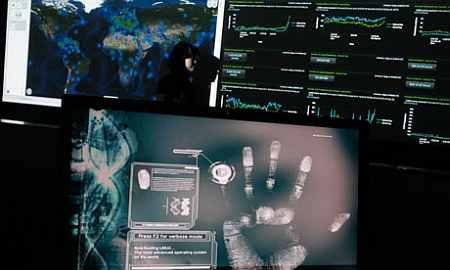 | « Back to article | Print this article |
Smaller cities are more prone to cyber attacks
Smaller cities in India run the risk of a cyber attack when compared to the bigger ones. A report released by Symantec Corp reveals that smaller and emerging cities such as Bhubaneshwar, Surat, Cochin, Jaipur, Vishakhapatnam and Indoreare increasingly facing the risk of cyber attacks, with 25 per cent of bot- infections in India reported in such cities.
The report also shows that advanced targeted attacks are spreading beyond the more commonly assumed target of large organisations with 50 per cent targeting small and medium organisations in 2011.
In addition, the report highlights that while the number of vulnerabilities decreased by 20 per cent, the number of malicious attacks continued to skyrocket by 81 per cent.
Click NEXT to read more...
Smaller cities are more prone to cyber attacks
"Augmented by broadband penetration, smaller and emerging cities of India are exploring opportunities offered by the virtual world, in turn creating a new lucrative pool of targets for cyber criminals to exploit," Shantanu Ghosh, vice president and managing director, India Product Operations, Symantec.
"Lack of awareness and low adoption of security measures makes these cities susceptible to cyber threats and warrants greater vigilance in protecting information assets."
Smaller, Emerging Cities Face the Risk of Cyber Attacks: Small and emerging cities such as Bhubaneshwar, Surat, Cochin, Jaipur, Vishakhapatnam and Indore have a high proportion of SMBs and industry clusters.
Click NEXT to read more...
Smaller cities are more prone to cyber attacks
Symantec has observed a sizeable 25 per cent of bot-infected computers in these cities, indicating that these locations are being inducted as part of a network of compromised computers.
Additionally, some cities that repeatedly appear in the list for origin of phishing in India - Ahmedabad, Nashik and Coimbatore also figure in the list of bot-infections.
Click NEXT to read more...
Smaller cities are more prone to cyber attacks
Targetted attacks on organisations of all sizes
Targetted attacks are growing, with the number of daily targeted attacks increasing from 77 per day to 82 per day by the end of 2011.
Targetted attacks use social engineering and customised malware to gain unauthorised access to sensitive information. These advanced attacks have traditionally focused on public sector and government; however, in 2011, targeted attacks diversified.
Targetted attacks are no longer limited to large organisations. More than 50 percent of such attacks target organisations with fewer than 2,500 employees, and almost 18 percent target companies with fewer than 250 employees.
These organisations may be targetted because they are in the supply chain or partner ecosystem of a larger company and because they are less well-defended.
Click NEXT to read more...
Smaller cities are more prone to cyber attacks
Fifty-eight per cent of attacks target non-execs, employees in roles such as human resources, public relations, and sales.
Individuals in these jobs may not have direct access to information, but they can serve as a direct link into the company. They are also easy for attackers to identify online and are used to getting proactive inquiries and attachments from unknown sources.
The report also states that 1.1 million identities were stolen per data breach on average in 2011, a dramatic increase over the amount seen in any other year.
Hacking incidents posed the greatest threat, exposing 187 million identities in 2011 -- the greatest number for any type of breach last year.
Click NEXT to read more...
Smaller cities are more prone to cyber attacks
However, the most frequent cause of data breaches that could facilitate identity theft was theft or loss of a computer or other medium on which data is stored or transmitted, such as a smartphone, USB key or a backup device. These theft-or loss-related breaches exposed 18.5 million identities.
As tablets and smartphones continue to outsell PCs, more sensitive information will be available on mobile devices,Workers are bringing their smartphones and tablets into the corporate environment faster than many organisations are able to secure and manage them.
This may lead to an increase in data breaches as lost mobile devices present risks to information if not properly protected.
Click NEXT to read more...
Smaller cities are more prone to cyber attacks
Mobile threats expose businesses and consumers
Mobile vulnerabilities increased by 93 percent in 2011. At the same time, there was a rise in threats targeting the Android operating system.
With the number of vulnerabilities in the mobile space rising and malware authors not only reinventing existing malware for mobile devices, but creating mobile-specific malware geared to the unique mobile opportunities, 2011 was the first year that mobile malware presented a tangible threat to businesses and consumers.
These threats are designed for activities including data collection, the sending of content, and user tracking.





